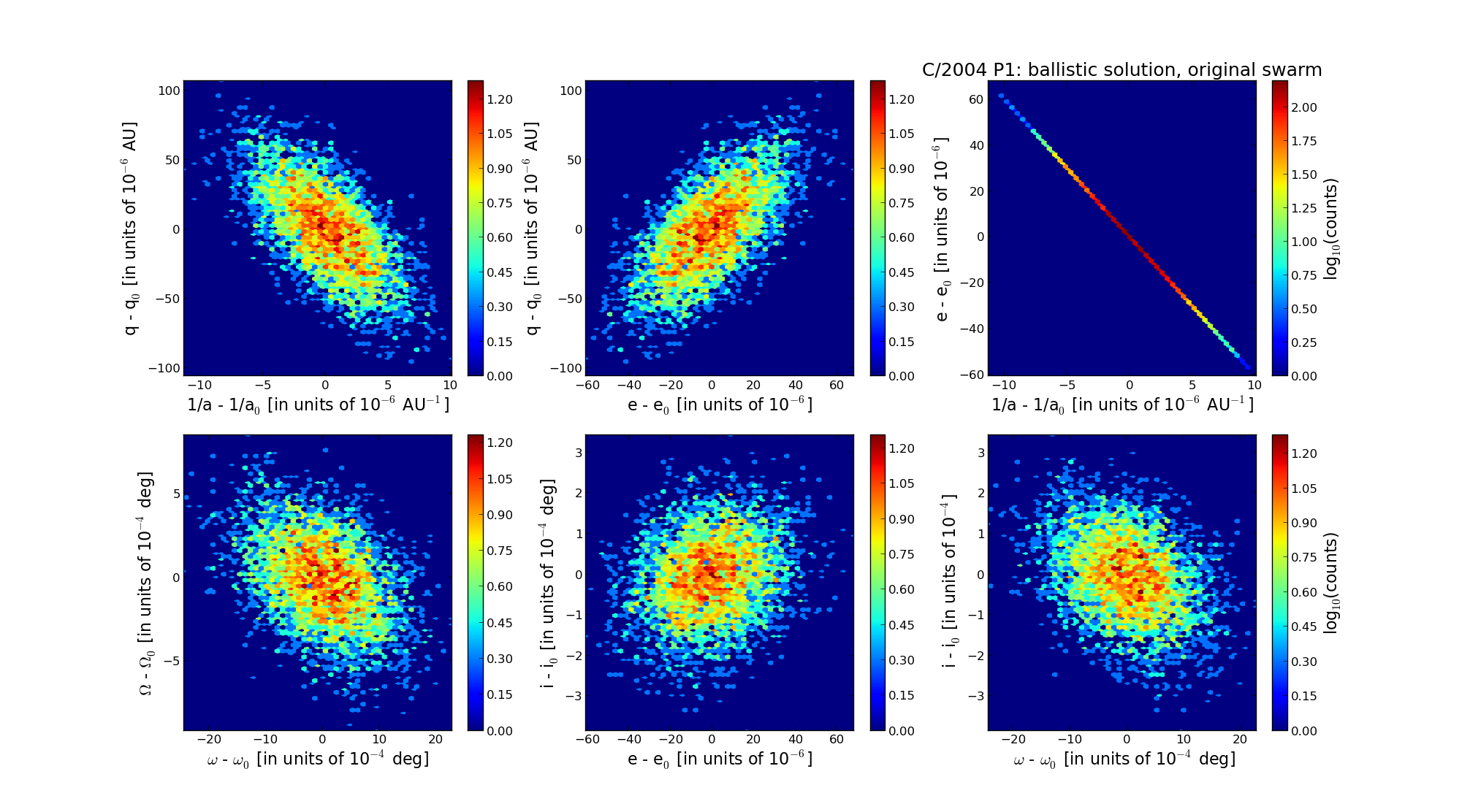| Solar System Dynamics & Planetology Group |
 |
C/2004 P1 NEAT |  |
| Solar System Dynamics & Planetology Group |
 |
C/2004 P1 NEAT |  |
| number of observations | 151 |
| number of residuals | 298 |
| data interval | 2003 May 11 — 2005 Aug. 30 |
| rms [arcsec] | 0.63 |
| orbit quality class | 1a |
| Epoch (TT) | 20030720.0 | = JD 2452840.5 |
| time of perihelion passage (TT) | 20030808.923813 | ± 0.006332 |
| perihelion distance | 6.01409659 | ± 0.00003034 |
| eccentricity | 0.99873180 | ± 0.00001857 |
| argument of perihelion [deg] | 16.596434 | ± 0.000685 |
| longitude of the ascending node [deg] | 284.193932 | ± 0.000238 |
| inclination [deg] | 28.823571 | ± 0.000094 |
| inverse semimajor axis [10-6 au-1] | 210.87 | ± 3.09 |

| Epoch (TT) | 16960509 | |
| time of perihelion passage (TT) | 20030809.041740 | ± 0.006290 |
| perihelion distance | 6.02262457 | ± 0.00003005 |
| eccentricity | 0.99981290 | ± 0.00001835 |
| argument of perihelion [deg] | 16.535459 | ± 0.000689 |
| longitude of the ascending node [deg] | 284.228301 | ± 0.000240 |
| inclination [deg] | 28.798128 | ± 0.000095 |
| inverse semimajor axis [10-6 au-1] | 31.07 | ± 3.05 |
| Epoch (TT) | 23090606 | |
| time of perihelion passage (TT) | 20030809.402431 | ± 0.006324 |
| perihelion distance | 6.01959208 | ± 0.00003012 |
| eccentricity | 1.00053526 | ± 0.00001833 |
| argument of perihelion [deg] | 16.663610 | ± 0.000687 |
| longitude of the ascending node [deg] | 284.176723 | ± 0.000240 |
| inclination [deg] | 28.802090 | ± 0.000095 |
| inverse semimajor axis [10-6 au-1] | -88.92 | ± 3.05 |